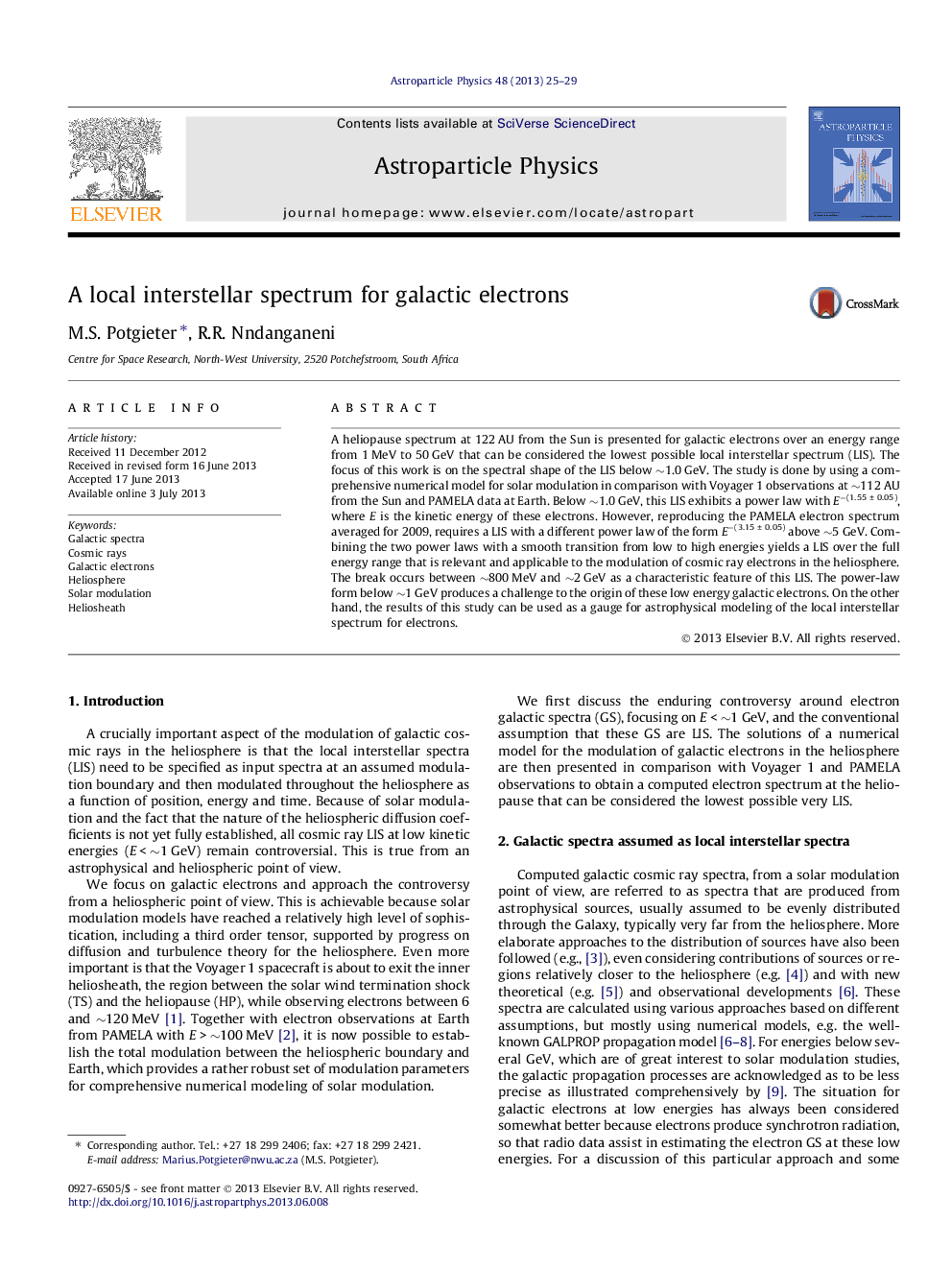| Article ID | Journal | Published Year | Pages | File Type |
|---|---|---|---|---|
| 1770725 | Astroparticle Physics | 2013 | 5 Pages |
•A solar modulation model is compared to observations from Voyager 1 and PAMELA.•A heliopause spectrum is subsequently calculated from 1 MeV to 50 GeV.•A spectral break is found for this spectrum between ∼800 MeV and ∼2 GeV.•Below ∼1 GeV it exhibits a power-law E−(1.55 ± 0.05) with E kinetic energy.•Above ∼5 GeV a different power law is found, with E−(3.15 ± 0.05).
A heliopause spectrum at 122 AU from the Sun is presented for galactic electrons over an energy range from 1 MeV to 50 GeV that can be considered the lowest possible local interstellar spectrum (LIS). The focus of this work is on the spectral shape of the LIS below ∼1.0 GeV. The study is done by using a comprehensive numerical model for solar modulation in comparison with Voyager 1 observations at ∼112 AU from the Sun and PAMELA data at Earth. Below ∼1.0 GeV, this LIS exhibits a power law with E−(1.55 ± 0.05), where E is the kinetic energy of these electrons. However, reproducing the PAMELA electron spectrum averaged for 2009, requires a LIS with a different power law of the form E−(3.15 ± 0.05) above ∼5 GeV. Combining the two power laws with a smooth transition from low to high energies yields a LIS over the full energy range that is relevant and applicable to the modulation of cosmic ray electrons in the heliosphere. The break occurs between ∼800 MeV and ∼2 GeV as a characteristic feature of this LIS. The power-law form below ∼1 GeV produces a challenge to the origin of these low energy galactic electrons. On the other hand, the results of this study can be used as a gauge for astrophysical modeling of the local interstellar spectrum for electrons.
